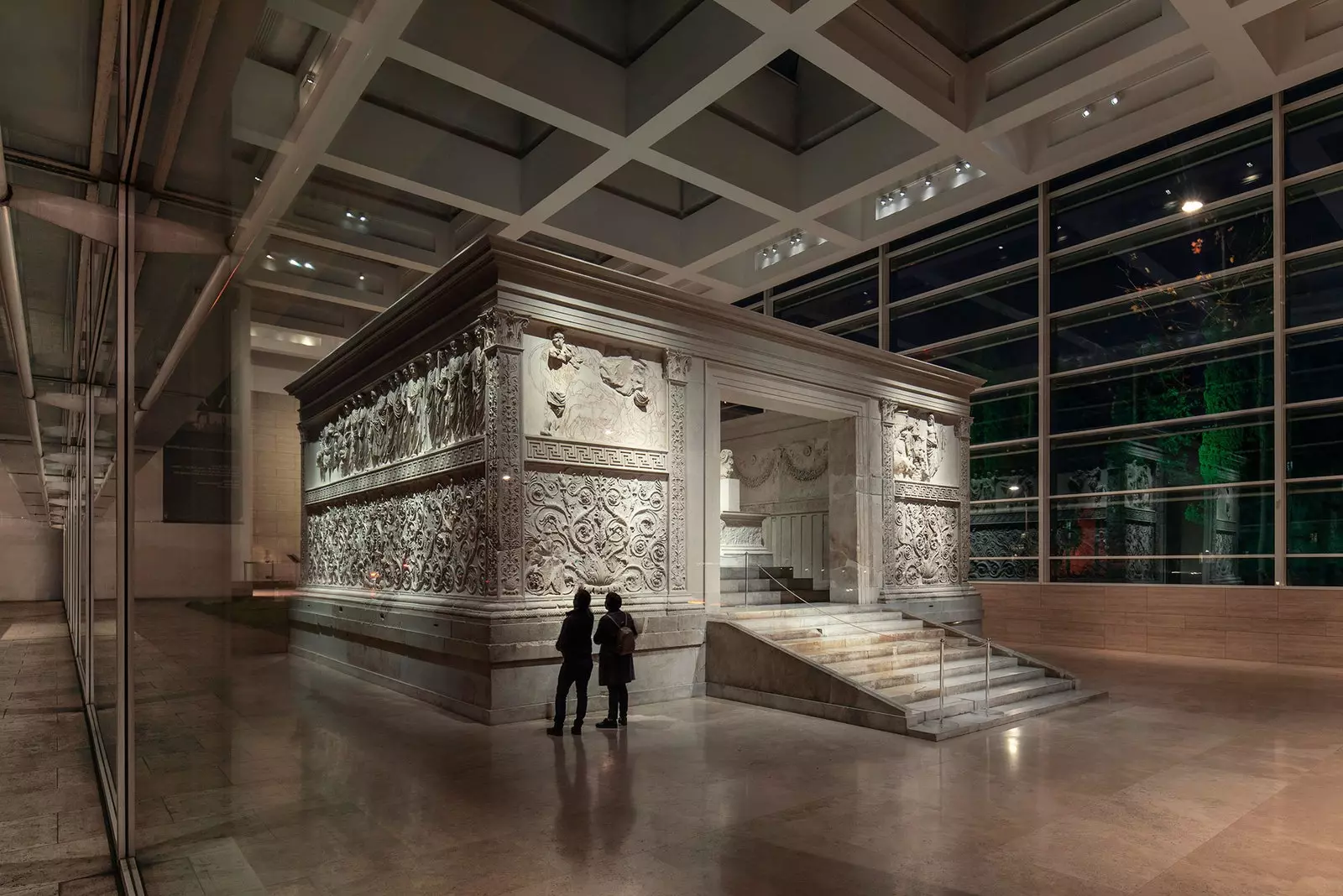
The Ara Pacis monument of Augustus shines with a renewed light.
For centuries it remained hidden and surrounded by mud. It was later recovered but, even today, not everyone knows about the existence of the magnificent Ara Pacis. No wonder: wonders compete for the attention of travelers in the Eternal City. From now on, however, whoever has the privilege of visiting it will be able to enjoy it even more, thanks to its recently released lighting system.
It was the great Augustus who had this altar of peace built at the end of the 1st century BC (ara pacis, in Latin), after several years of victorious military campaigns in Hispania and Gaul, where, among other exploits, he founded the cities of Zaragoza (Cesaraugusta) and Mérida (Augusta Emerita).
The longest reigning emperor he chose the Field of Mars to locate it and ordered the magistrates, priests and vestal virgins to celebrate each year a sacrifice (a ram and two oxen) and offerings for peace. The size of this uncovered rectangular building, with two doors and an altar inside, was (and is today) 11 meters long by 11 wide, approximately, and almost 5 high.
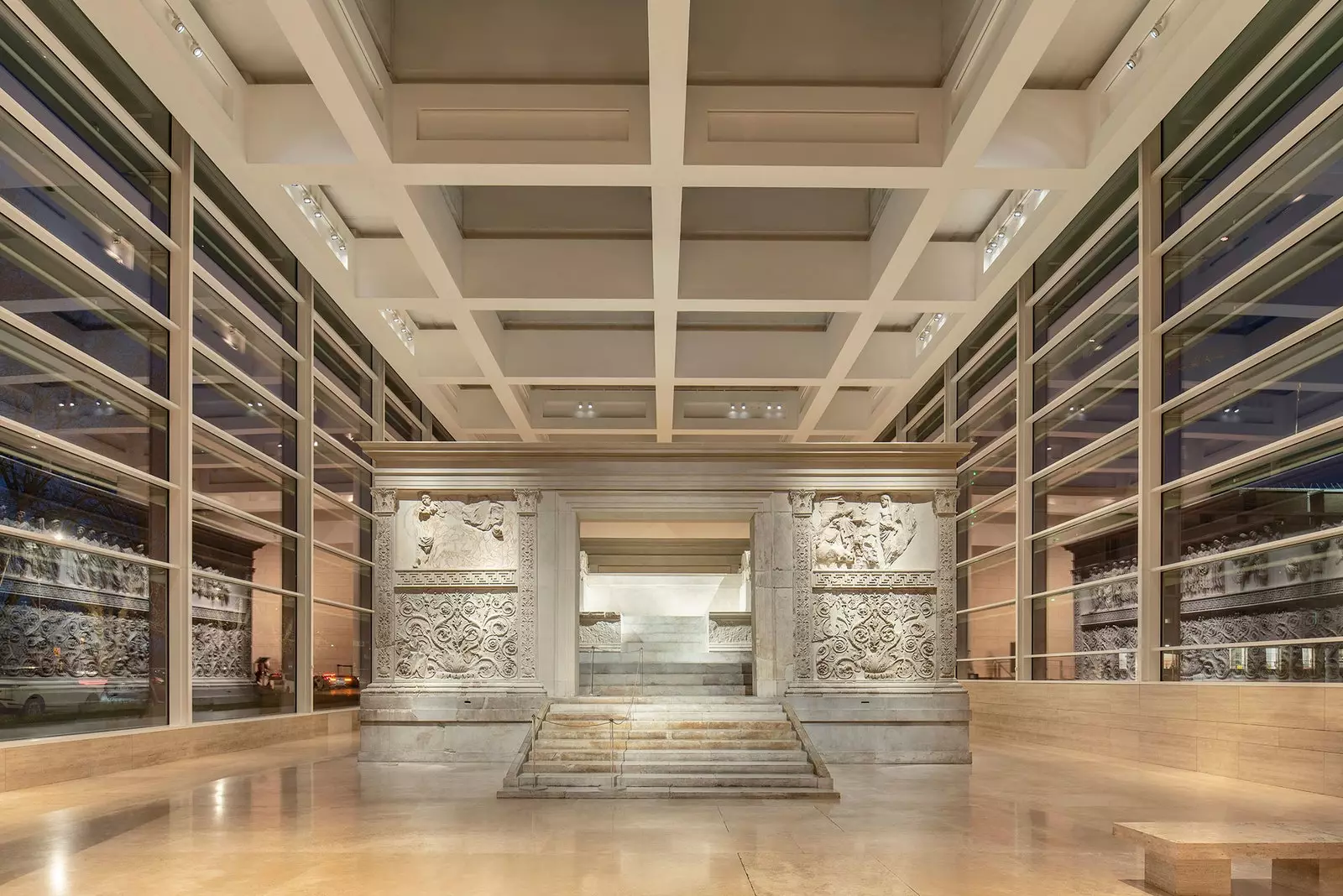
For centuries, this work of art remained hidden in the underground of Rome.
In one of its two doors the priest who directed the ritual was placed and, on the other, the animals were placed who found death for the sake of peace that had been achieved after arduous battles. Built in Carrara marble, it can now be better appreciated thanks to the total renovation of the lighting, which has consisted, in essence, in replacing the halogen lamps of all the rooms of the museum by new generation LED bulbs.
The new work also it has improved the lighting system of the exhibition spaces through the installation of new rail lights and more light points and lamps, all this also with LED technology. The financing of the project comes from a patronage initiative of the Italian luxury firm Bvlgari, with a donation of 120,000 euros, and with 86,300 euros of funds from Roma Capitale, that have covered the adaptation of the exhibition spaces on the ground floor of the museum.
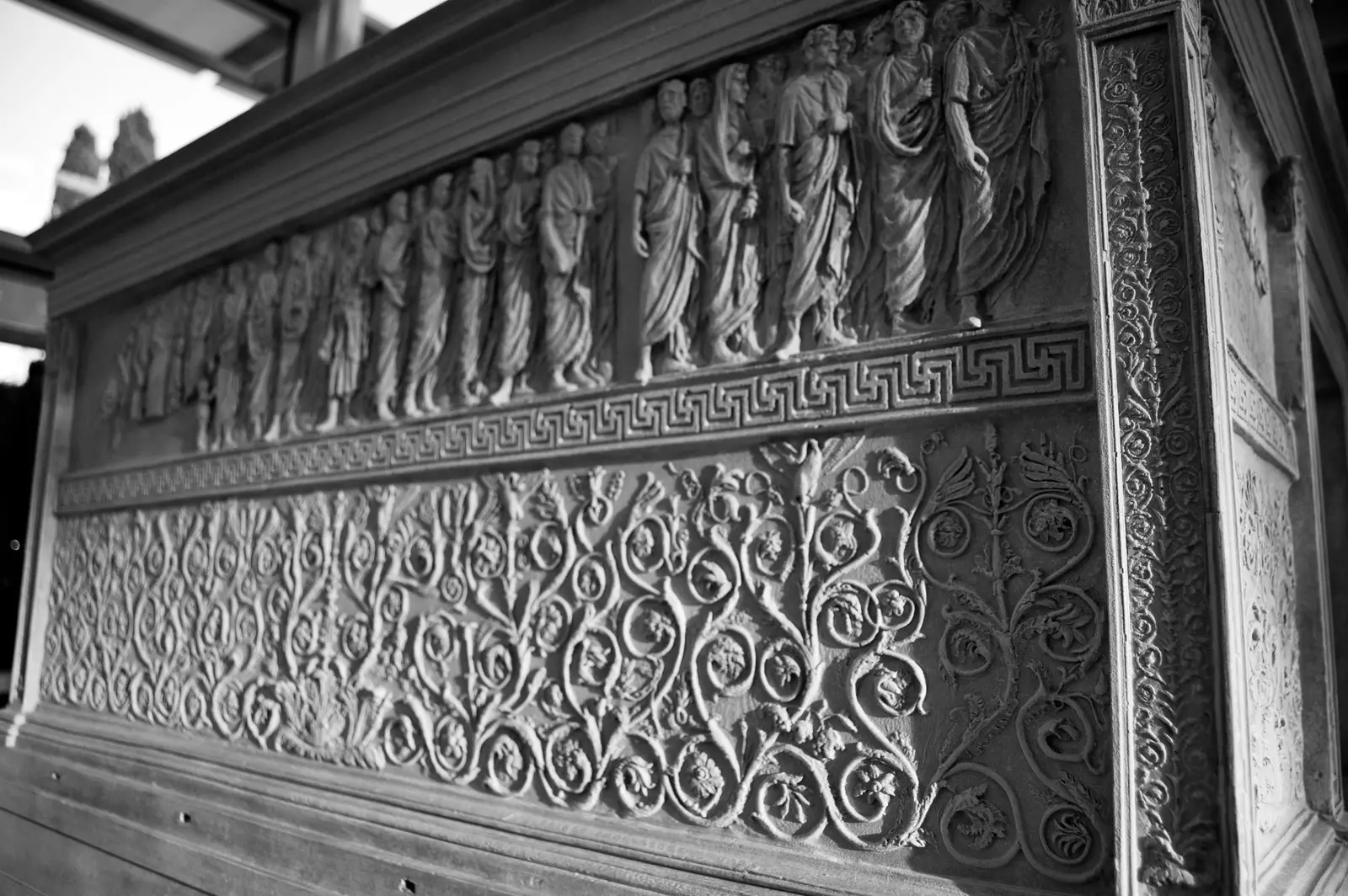
The reliefs on the wall represent real characters from the history of Rome.
The same architect who signed the museum complex, Richard Meier has supervised and validated this project, which gives visitors greater enjoyment of this historical jewel.
A JEWEL RESCUED FROM THE UNDERGROUND
Officially inaugurated on January 30, 9 BC, the Ara Pacis was originally located along the ancient Via Flaminia and its main façade faced Campo Marzio, where apparently the army carried out its maneuvers. The proximity of the Tiber River and the continuous construction in the area They produced great damage to the marble structure, which eventually succumbed to the subsoil of the city.
The first sculpted blocks were rediscovered in 1568, under the Palazzo Peretti (or Fiano) on Via in Lucina, and thanks to other excavations carried out between 1859 and the beginning of the 20th century. these fragments They became part of various collections, such as the Uffizi Gallery and Villa Médicis in Florence, the Louvre in Paris, and the Vatican Museums. Already in the 1870s, thanks to the German archaeologist Friedrich von Duhn, could be correctly attributed to the altar of peace of Augustus.
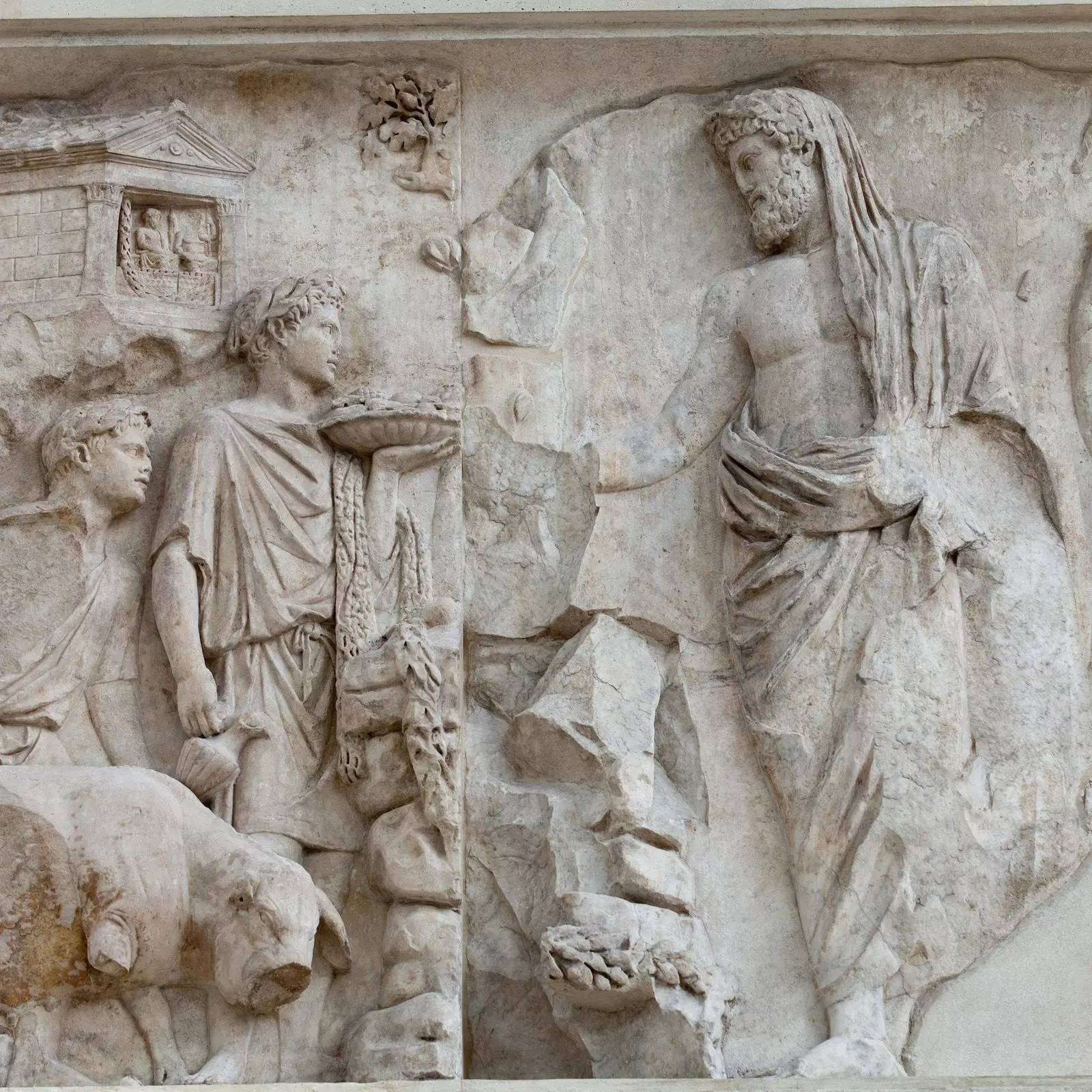
Allegories about the greatness of Augustus and the history of the Empire decorate this impressive monument.
Then began the projects to rebuild it. In 1938, Mussolini's fascist regime decided that the Ara Pacis be rebuilt next to the Mausoleum of Augustus, within a structure that was designed by the architect Vittorio Ballio Morpurgo. Thus, it was rebuilt in a few months, while, Around it, the Mausoleum was completely uncovered and the new Piazza Augusto Imperatore was finished.
The monument was officially inaugurated on September 23, 1938, inside a glass structure, but in a few years it could be seen that it would need more protection. In 1970 the first restoration was carried out, and in 2000 a new project by Richard Meier was approved. In 2006 the current Ara Pacis Museum was inaugurated.
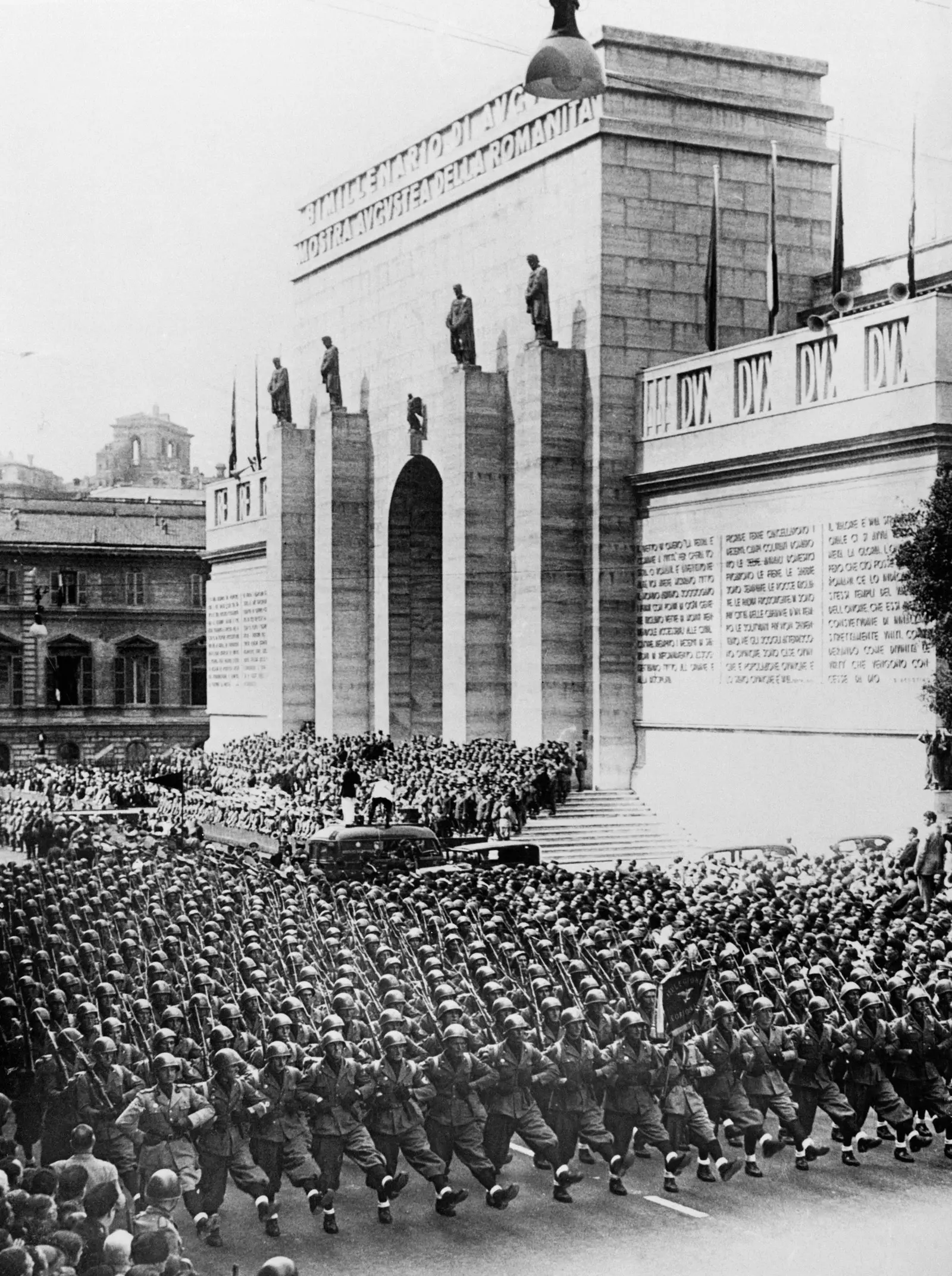
Mussolini inaugurated the reconstruction of the Ara Pacis with a parade in 1938.
NOW, MORE ECOLOGICAL
"We are proud to have contributed to this project, which beautifully combines beauty and energy efficiency," explained at the inauguration of the new lighting Jean-Christophe Babin, CEO of Bvlgari. "As jewelers, we are aware of the importance of light to enhance the beauty of nature and the treasures of history, as in this case. Our sign strongly believes in public-private partnership and we are more willing than ever to collaborate with the institutions to carry out new projects together, as a tribute to the greatness of Rome and its ancient culture".
For her part, the mayor of Rome, Virginia Raggi, has commented that she will persevere in the effort "to maintain and enhance the beauty of the emblematic places of Rome", adding that the museums reopened safely just a week ago and that now is added the revelation with this new light of "an important symbol for all Roman citizens, an architectural and cultural heritage of inestimable value."
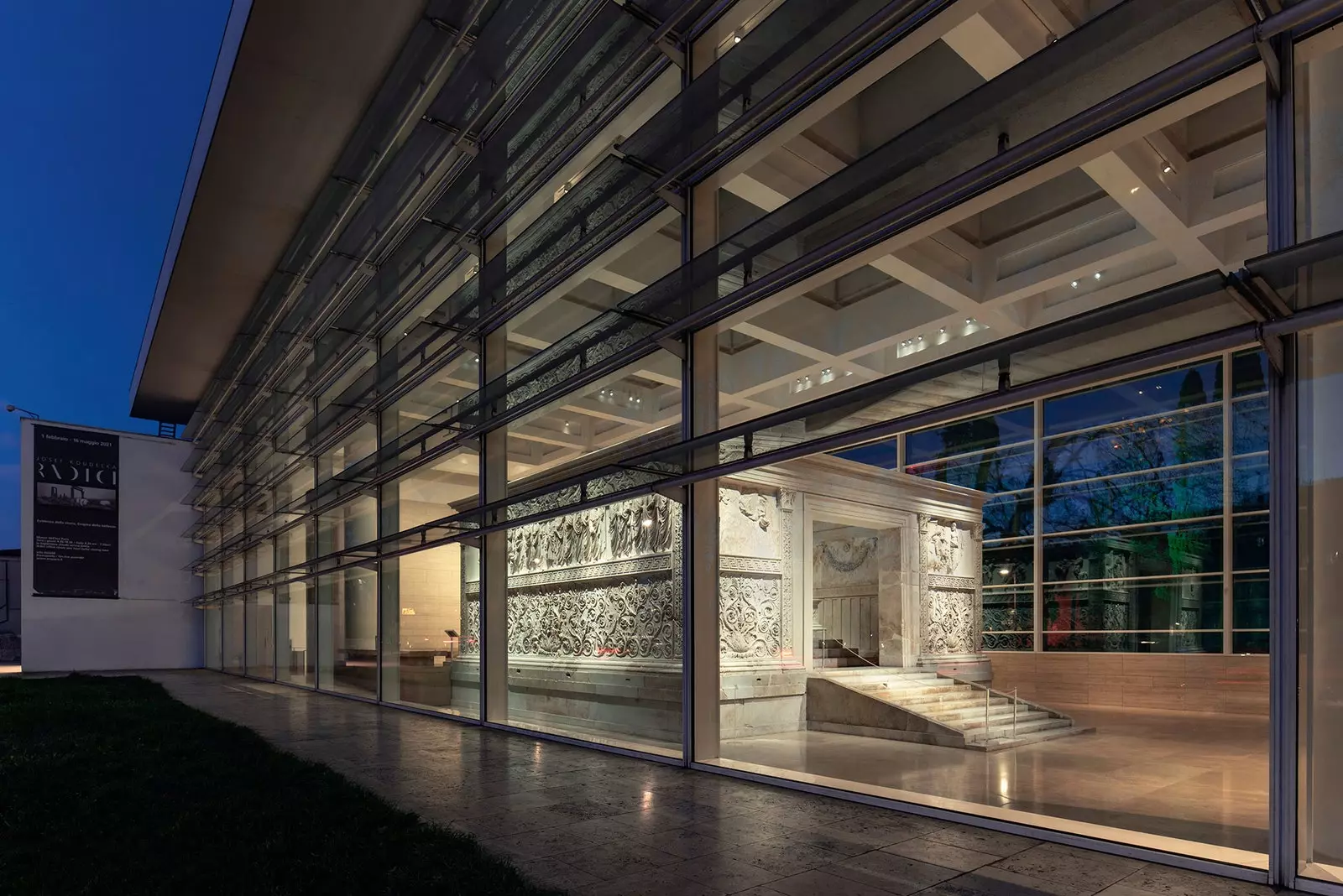
Augustus' 'altar of peace' had to be protected by another building.
Travelers are becoming more aware of the impact of their visits on the environment, so there is a global trend to minimize it. This has also been pursued in this initiative, which represents an important step forward in terms of sustainability and energy saving, in compliance with recent European directives. The new lamps have reduced electricity consumption by a seventh, with the consequent reduction in management costs. The nominal power of the lighting system has increased from 57 kW with halogen lamps to 8.4 kW with LED lamps, reducing the electrical load by 85%.
Maintenance costs have also been minimized, as the new low consumption lamps have very technical specifications, both in terms of luminous flux over time (90% of the initial luminous flux is guaranteed for 50,000 hours), as to the integrity of the system (Only one LED can fail for every 1,000 installed in 50,000 hours of use). This means that the new lighting system minimizes your maintenance needs throughout its useful life, while maintaining its initial level of performance and efficiency over time.
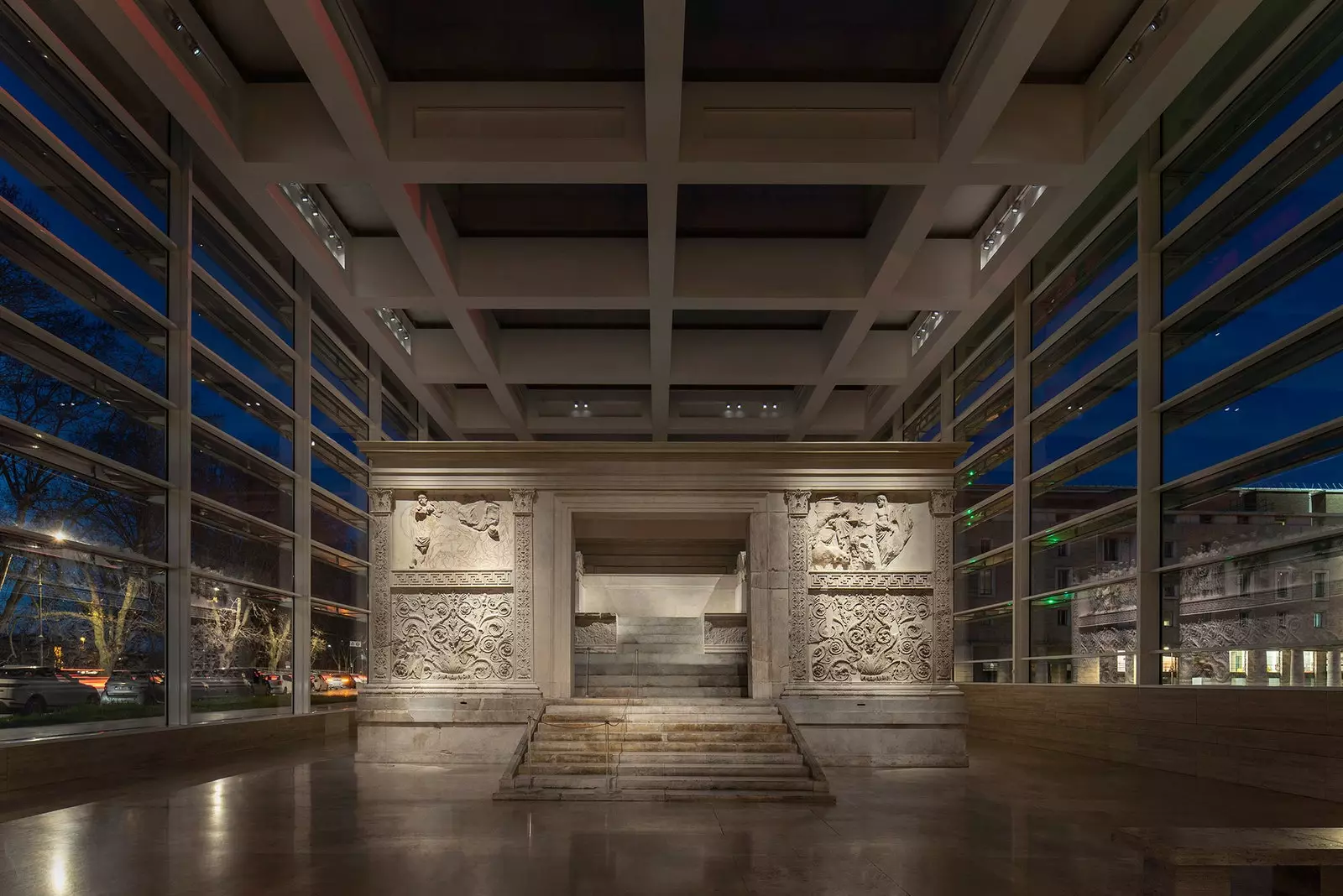
The monument was built between 13 B.C. and the year 9 B.C.
The technical possibilities of the new system are equally remarkable: it is now possible to control the brightness by selecting different "settings" (day and night; different seasons; ambient light), enhancing the beauty and the visibility of the altar that, enclosed in a glass and steel box, reacts to the different lights of the day and to the changes of seasons. The project has been carried out with ERCO luminaires.
A HISTORICAL AND ARTISTIC JEWEL
What can the visitor find before this special piece? The exquisite work of the friezes, which are among the most important made in the first imperial era, immortalizes the family of the first emperor, to the main priestly colleges of Rome and to the divine protectors of the Eternal City.
They recreate scenes related to the legend of Aeneas on one side and with Romulus and Remus on the other. Of the four originals only two have been preserved almost complete, combining elements of Greek and Hellenistic origin. On the back, the goddess Gea can be seen representing prosperity. The external side walls reflect a large number of characters of the time, including Augustus himself.
Originally, the reliefs were painted, although today they show the color of the same stone, but his mastery it has been compared to those of the Parthenon in Athens. Definitely, a renewed history lesson in which the focus has settled (this time, in a sustainable version) and that awaits us with open arms in Rome.
